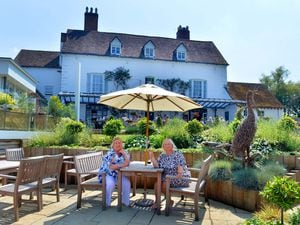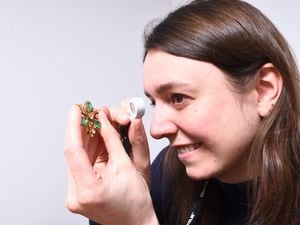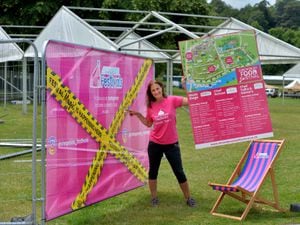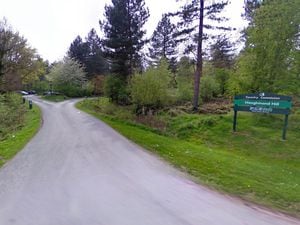Nature conservation is the topic of conversation
Exploring more of the world of nature found on our doorsteps has helped many of us through a difficult year – and Staffordshire Wildlife Trust’s senior conservation manager David Cadman is keen to encourage people to continue nurturing this important connection with nature.
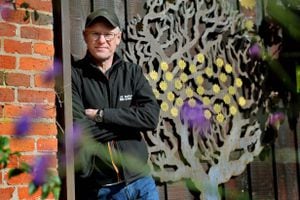
He has been full-time working for the charity – committed to protecting the county’s wildlife and wild places for more than half a century – since 2003, having started out as a volunteer two years previously.
“I started as a volunteer in 2001 which is generally how the majority of our staff beginand I became a full-time member of staff in 2003,” he said. “Nature conservation is something you can only fully learn through experience. You can learn a bit at university but it doesn’t replace field skills and prolonged experience,” says David.The trust cares for 30 different nature reserves. David’s job is to ensure, with the help of his 20-strong team, that these continue to thrive for generations to come.
He also works with landowners, local authorities and government agencies to improve habitats, increase biodiversity and find natural solutions to prevent the risk of flooding. “One of the big objectives at the moment is creating a Nature Recovery Network in the county,” he said. “This is essentially a map of the county showing whether habitats and species are abundant or scarce, so we know where we need to create new habitats or extend existing habitats.
“Habitat sites are increasingly isolated so we are trying to connect these up to give wildlife more space to move around,” he added.As part of the project, the charity wants to rebuild society’s connection to the natural world by bringing wildlife closer to people.
“We want people to continue to connect with nature so they will want to help us protect it,” said David. He said there were many ways for families and individuals to play a role in making space for nature in their own gardens. “It can be as simple as planting some wildflowers in the garden for the bees and butterflies, planting a tree. Instead of having manicured lawns, hold back on the grass management to, providing space for insects or incorporate a little pond in your garden,” he said.
Another way to get involved in helping to benefit local wildlife is reporting sightings of species to Staffordshire Wildlife Trust.
“All through lockdown we put out requests asking people to tell us what they were seeing during walks in their area,” says David.
He has witnessed first hand how people have rediscovered a love of nature and the younger generations have benefited from new experiences and encounters.
“During lockdown people were confined to their local patch and were taking time to get to know it properly and started to appreciate what they were seeing. I have a route where I live that I would regularly walk and it really opened my eyes. I was looking at the hedgerows and how they changed.
“But for me the best thing about lockdown was being able to get my two kids involved in taking the time to look at the different species and what’s growing in the hedgerows. They’ve become really interested and want to buy identification books for birds and butterflies. They’ve been fruit picking and made jam. Sadly, while the vast majority of people have respected beauty spots on their doorstep, others have not been so considerate, which has had a negative on the environment.
During lockdown the site management team was kept busy dealing with the aftermath of anti-social behaviour at many of its reserves.
“They were severely affected,” said David. “Some of our larger reserves like The Roaches and Highgate Common couldn’t be closed so we had people coming to the reserves. We saw a different type of visitor during this time and we had an awful lot of anti-social behaviour. At Highgate Common, asbestos was dumped and there were campervans accessing the car park to empty their chemical toilets.” says David.
As well as taking staff time off work, removing this tipping left the charity with a big bill at a time when it had no income from its charity shops or cafes.
There were also reports of people lighting barbecues and small fires at The Roaches which left the conservation team fearful of a repeat of the devastating blaze which spread across 200 acres of moorland at the nature reserve in 2018. “We had members of staff working really hard to care for these sites and for nature in the face of a lot of anti-social behaviour,” says David.But the charity is now looking to the future and has been enjoying the return of respectful visitors to its sites, such as its Wolseley Centre headquarters, near Rugeley.
The trust is also running some of its popular family events, with social distancing in place, enabling valuable volunteers to return to work.
“We rely on our volunteers for an awful lot so we’re pleased that a lot of that valuable workforce is coming back,” says David.
Other members of the conservation team used the time to concentrate on setting up future projects and applying for funding to benefit the county’s nature.
David’s first piece of advice for anyone wanting to get more involved with local habitats and species is to become a member of Staffordshire Wildlife Trust.
If they want more hands-on experience then they can volunteer or join one of the charity’s local groups of wildlife enthusiasts who organise walks, talks and fundraising events.
“There is evidence that green spaces can provide mental health benefits and through our Nature Recovery Network project we’re hoping to give people more opportunities to connect with nature on their doorsteps,” says David.

